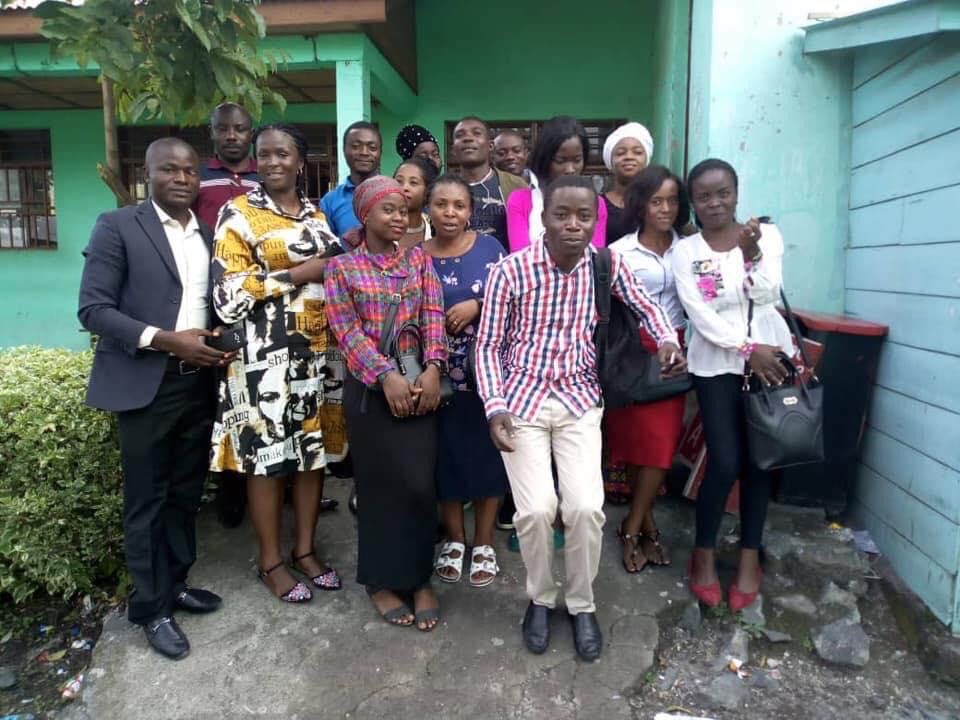
SELF-HELP AND RESILIENCE IN THE DEMOCRATIC REPUBLIC OF CONGO
I interviewed Bertin Kalimbiro from the Democratic Republic of Congo about his work in the Goma region to grow food safely and help people threatened
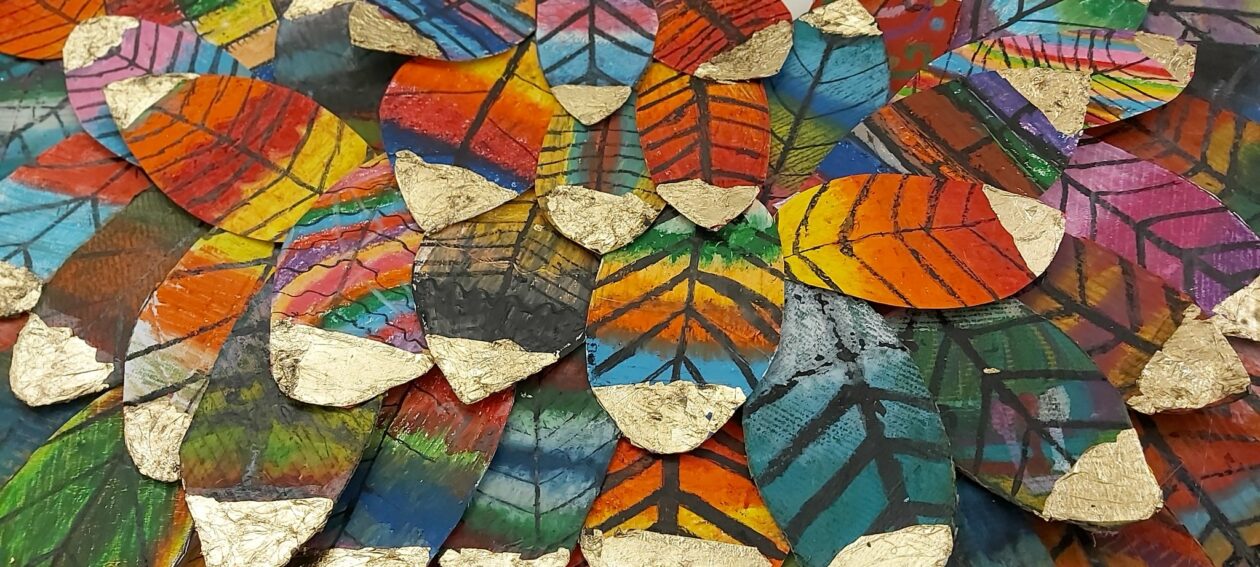

I interviewed Art Specialist Teacher Dilys Finlay whose exceptional work with the children of Beecroft Garden Primary School, involving drawing, painting, sculpture, textiles, photography, mosaics and installation, has featured in exhibitions and on London Live TV news. Dilys passionately believes that events like these as well as collaborations with visiting artists have given the children creative confidence.
Dilys studied Fine Art at Goldsmiths College, London, working in adult education before becoming a primary teacher.
Leslie: If I was a regular visitor to your school, what would strike me about the visible and less visible art going on?
Dilys: As you walk up to the outside entrance you will see evidence of street art made in collaboration with local artists, one on the music block from Artmongers, a Lewisham based street art organisation working collaboratively with adults and school communities, and also a painting of a bee by the internationally acclaimed and former Lewisham resident, Louis Masai.
The main reception area has an art gallery feel with sculptures on plinths, art in frames, much of it collaborative, including textiles and photography.
We have had a tv screen which regularly showed at work in progress before lockdown. Visitors are limited to essential only now until further notice.
Leslie: How do you draw out children’s creativity at different ages and stages of their development? Can you give us some stories, please, about how artworks began, grew and developed?
Dilys: All art we do has a topic based starting point from which we use many cross-curricular links. This brings out the creativity in all subjects. We link our art to a contemporary artist and one from the past; if it links to the other subjects then this allows for a full range of experience and allows the children to see many different art forms. Children are taught basic skills of drawing, painting and using clay, learning how to use the many tools at their disposal. This in turn empowers them to use these tools with independence and resilience. The process is very much part of our lessons. Processes have ways of surprising us with their outcomes.
One time a year 2 child who usually struggled with subjects such as reading, maths and writing, had been using different colours of ink on his leaf-and-flower painting, A3 cartridge. He was taking care to keep his colours clean so he could get the ones he needed. The inks ran into each other, as it often does, and he burst out with, “My colours are crying!” We all stopped as he held it up and we watched the ‘tears’ of ink flow down his paper. It was such a beautiful moment and we used it for the rest of the lesson. All the children use little accidents as part of the process and the journey to accepting them as such is as much about learning as everything else. Accidents are beautiful and help us to think differently.
Leslie: Can you tell us a few stories that showcase the transferable skills that art can develop?
Dilys: Ways of using different motor activities such as bending wire, manipulating clay, holding a paintbrush at different angles, making felt transfer readily into many areas of practical learning with the strengthening of fingers and hands,
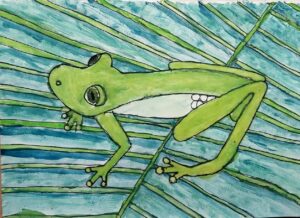
Links with Science are particularly active when using materials and all the vocabulary associated. Children see practical examples and experiments unfold before their eyes. They are able to discuss what would happen if other materials were put in our school kiln when doing ceramics, learning about temperature and how heat makes reversible or irreversible change. We use maths to solve design problems using shapes for tessellation and repetition for textiles. We use poetry to discuss how art makes us feel and are often using critical thinking within this process of discussion. These are a tiny example of the many areas of the curriculum, but I would say that the biggest life skill is the developing of resilience.
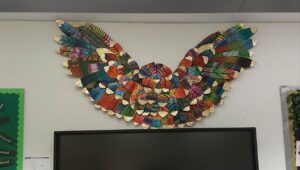 Leslie: What was your own childhood experience of art, and how has it led to your present specialism? How have you seen (or would like to see) art teaching changing?
Leslie: What was your own childhood experience of art, and how has it led to your present specialism? How have you seen (or would like to see) art teaching changing?
Dilys: I was surrounded by artists, musicians and actors as a child. Because of this my parents wanted me to enter a different area, such as science. I rebelled as art was what came naturally to me. Art saw me through some tough times growing up. It was what made me have an identity at school when I struggled with other subjects. I was lucky enough to have art in primary school every week, but it mainly consisted of drawing, painting or collage.
Leslie: Could you give us a few anecdotes that show how parents contribute to art your school?
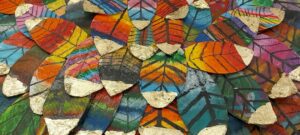
Dilys: Parents have helped us in many ways. We get to know their interests and specialisms, of which there are many and invite them into the school to volunteer in lessons and help us mount our art shows – collaborative arts events with visiting artists. We have been donated many items to use for our art, most notably and recently our school kiln! Lewisham is a vibrant community that has many artists living here and we are very lucky to have made links with local businesses who have donated many things over the years, realising we have a very arts-based curriculum. This contribution by parents has allowed us to enrich our curriculum to the max!
Leslie: Do you have examples of how technology has supported creativity in art?
Dilys: Technology is something we need to improve on within arts-based learning. We have however made stop-motion animation using ipads and have very useful online links to schools both around the country and internationally where we have promoted the work we do.
We have this term procured brand new Chrome Books for the whole of KS2. We are about to launch several arts apps on our new Ipads.
Leslie: Can you describe your historical interests, where & how you learn about them, and how they contribute to your teaching?
Dilys: I studied art at Goldsmiths College and was a practising artist before becoming a teacher. My interests have always been science, nature and sustainability. I often used all of these within my teaching. It is important for children from a very young age to see art as connected to all the subjects, not see them as separate. This allows them to make more links to many different subjects and encourage them to want to be more curious about them too.
Leslie: Who are your artistic heroes – why them?)
Dilys: My art heroes are:
Ernst Haeckel for his pioneering scientific drawings of sea creatures and mollusks – teaching children about pattern and symmetry
Yinka Shonibare – his colourful installations and use of textiles teaches us about migration and identity
Frank Bowling OBE – Windrush Generation artist using maps and abstracts on a large scale allowing children to free themselves from the constraints of observational art, again identity with maps
Barbara Kobylinska – Polish/Canadian sculptor using mixed media to make large scale bird sculptures. Sculptures that are colourful and shapes that are full of character, encouraging stories and poems
Tamara Natalie Madden – her beautiful colourful portraits with gold allow for pride, strength and self belief.
Turner – wondrous horizon lines and drama, full of sky, sea and stories.
These are just a few I use regularly but there are many more.
Next week, I interview historical novelist, archaeologist, teacher & performance poet Kate Innes about her writing and her life experiences in Zimbabwe, Connecticut & now Shropshire.
ABOUT LESLIE TATE’S BOOKS:

I interviewed Bertin Kalimbiro from the Democratic Republic of Congo about his work in the Goma region to grow food safely and help people threatened

I interviewed computer expert and sustainability campaigner Dr Erlijn van Genuchten, who writes easy-to-understand books based on science full of practical suggestions for planet-friendly living.

I interviewed Canadian cartoonist Dawn Mockler about how she works on cartoons that might be environmental or wordless but always witty – especially her famous
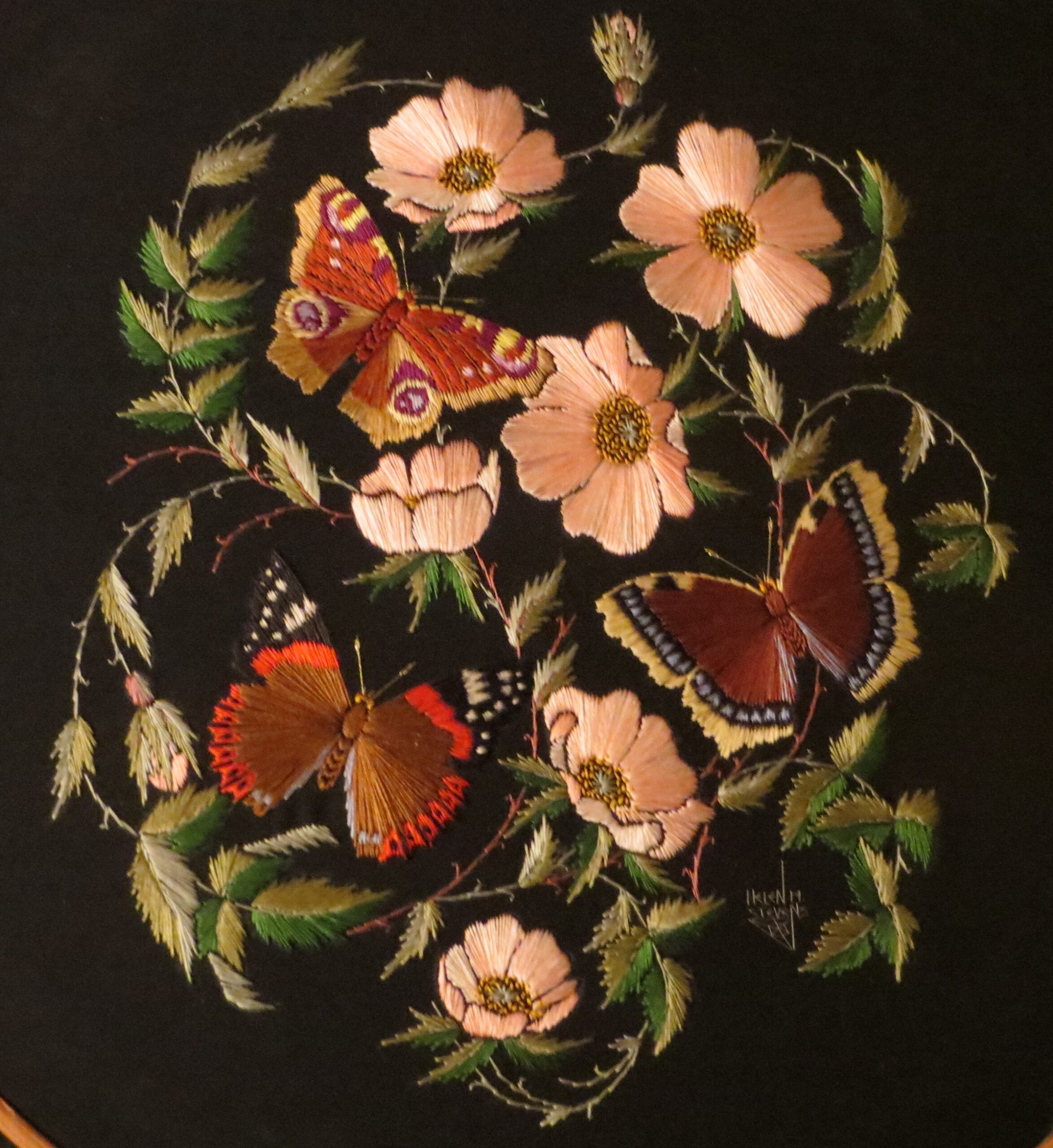
I inteviewed Helen M Stevens about how she has revived the art of embroidery, creating original contemporary patterns while studying and drawing on, “One of

I interviewed Councillor Rachel Smith-Lyte about the origins of her passion for nature and her environmental activism. Rachel tells the story of her teaching (and
| Cookie | Duration | Description |
|---|---|---|
| cookielawinfo-checkbox-analytics | 11 months | This cookie is set by GDPR Cookie Consent plugin. The cookie is used to store the user consent for the cookies in the category "Analytics". |
| cookielawinfo-checkbox-functional | 11 months | The cookie is set by GDPR cookie consent to record the user consent for the cookies in the category "Functional". |
| cookielawinfo-checkbox-necessary | 11 months | This cookie is set by GDPR Cookie Consent plugin. The cookies is used to store the user consent for the cookies in the category "Necessary". |
| cookielawinfo-checkbox-others | 11 months | This cookie is set by GDPR Cookie Consent plugin. The cookie is used to store the user consent for the cookies in the category "Other. |
| cookielawinfo-checkbox-performance | 11 months | This cookie is set by GDPR Cookie Consent plugin. The cookie is used to store the user consent for the cookies in the category "Performance". |
| viewed_cookie_policy | 11 months | The cookie is set by the GDPR Cookie Consent plugin and is used to store whether or not user has consented to the use of cookies. It does not store any personal data. |
One Response
Wow. Lucky children, to be inspired by such inventive approaches to art. Wish I had had a teacher like Dilys Finlay.